I'm trying to draw a basic 2d ground mesh made up of smaller tiles from a texture atlas (note the 1 pixel transparent border):

I render the tiles as texture quads using the following code:
glEnable(GL_TEXTURE_2D);
glBindTexture(GL_TEXTURE_2D, m_texture);
glTexParameteri(GL_TEXTURE_2D, GL_TEXTURE_MIN_FILTER, GL_LINEAR);
glTexParameteri(GL_TEXTURE_2D, GL_TEXTURE_MAG_FILTER, GL_LINEAR);
glEnableClientState(GL_VERTEX_ARRAY);
glEnableClientState(GL_TEXTURE_COORD_ARRAY);
glVertexPointer(2, GL_SHORT, 0, &m_coords[0]);
glTexCoordPointer(2, GL_FLOAT, 0, &m_uvs[0]);
glDrawArrays(GL_TRIANGLES, 0, m_coords.size() / 2);
glBindTexture(GL_TEXTURE_2D, 0);
glDisableClientState(GL_VERTEX_ARRAY);
glDisableClientState(GL_TEXTURE_COORD_ARRAY);
glDisable(GL_TEXTURE_2D);
The positions are obviously integer coordinates. The UV coordinates for the corners are calculated like this:
u0 = float(x) / float(texWidth);
v0 = float(y) / float(texHeight);
u1 = float(x+w) / float(texWidth);
v1 = float(y+h) / float(texHeight);
Where w and h is the size of the tile without the padding.
It looks great when the modelview transform is snapped to an integer position (right), but when it starts to move I get black thingies between the tiles (left):

From what I understand I should offset the UV coordinates with a half texel to make it work, but if I change the UV calculations to:
u0 = float(x+0.5f) / float(texWidth);
v0 = float(y+0.5f) / float(texHeight);
u1 = float(x+w-0.5f) / float(texWidth);
v1 = float(y+h-0.5f) / float(texHeight);
It still doesn't work. Is this the correct way to do it? Do I need blending for this to work? If I offset the tiles to make sure they're snapped to the pixel grid it works, but that makes it snap when moving slowly. How do people usually solve this?
EDIT
I should ofc have said that it's on the iphone.